#ian&sylvia
Explore tagged Tumblr posts
Link
A soul collage deep into my inspiration and motivation for this lifetime. Grateful Dead, Steve Miller Band, John Prine and more. Join me for the blues from yesterday.
0 notes
Text




The Bell Jar - Sylvia Plath / Distance - Ian Cumberland / Morning Elvis - Florence + the Machine / Sink or Swim - Ian Cumberland
69 notes
·
View notes
Text
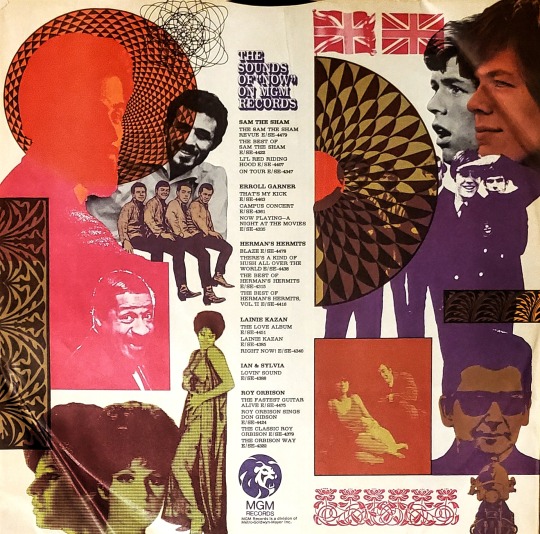

an MGM company-branded inner sleeve for vinyl, late 60s
#jail for 1000 years for whoever decided we shouldnt still get sick company inners in lieu of a custom inner#roy orbison#herman's hermits#connie francis#hank williams#lainie kazan#ian & sylvia#erroll garner#eric burdon#60s#my scans
155 notes
·
View notes
Text

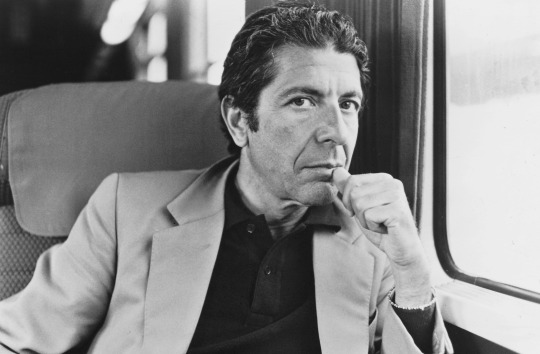
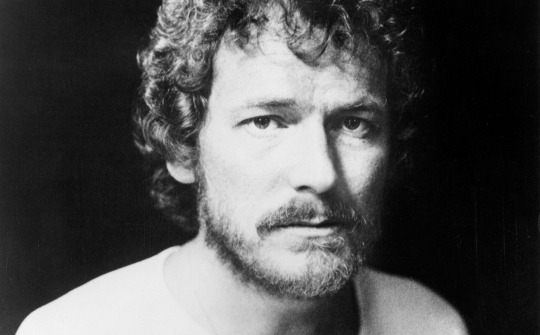
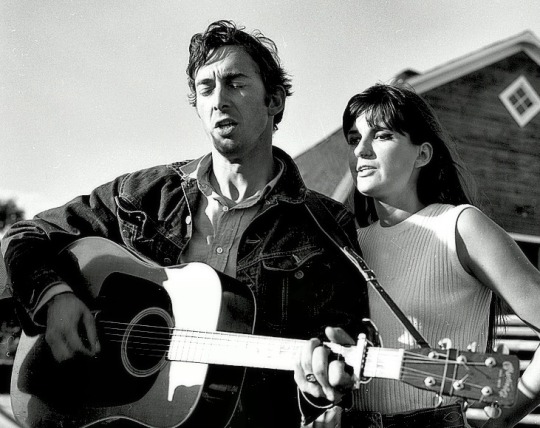
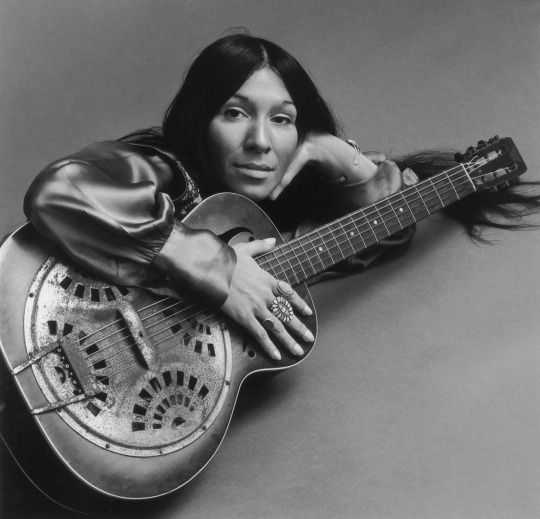

canadian folk musicians of the 60s/70s
#joni mitchell#leonard cohen#gordon lightfoot#ian and sylvia#buffy sainte marie#neil young#canadian#folk music#60s
360 notes
·
View notes
Text








literally literally literally that opening scene from Euphoria where Rue's mom is trying to make her feel better abt being neurodivergent
where she says "oh, there's been LOTS of amazing, talented people who are just like you!"
and then it's a montage of like the saddest fucking artists ever who ended up killing themselves like gooooOOOOOODDDDD
u see how they even rubbed salt in the wound throwin' Job in at the end 😩 plssss
#personality database#personality types#personality typology#infp#infp personality#myers briggs#euphoria#anxiety#neurodivergent#neurodiversity#depression#music#musicians#art#artists#funny#frankenstein#sylvia plath#vincent van gogh#syd barrett#kurt cobain#ian curtis#elliot smith#nirvana#pink floyd#joy division#the bell jar
7 notes
·
View notes
Text
In 1883, the time traveling alien known as the Doctor (Doctor 7) and his companion Ace travelled to Earth to investigate the creepy manor known as Gabriel Chase. Among the manor’s secrets appeared to be a strange creature and a stone spaceship. To make matters worse, the Doctor learned that Queen Victoria’s life might be at stake. ("Ghost Light", Doctor Who, TV)

#nerds yearbook#1883#time travel#bbc#doctor who#dr who#dw#marc platt#alan wareing#haunted house#doctor 7#7th doctor#sylvester mccoy#ace mcshane#sophie aldred#ian hogg#josiah#evolution#sylvia syms#michael cochrane#sharon duce#control#katherine schlesinger#john nettleton#carl forgoine#nimrod#brenda kempner#katy jerrett#cathy munroe#frank windsor
7 notes
·
View notes
Text
a friend once told me ian duncan had t-boy swag and i havent been the same since
#but honestly most main characters in community had t-boy swag#community#community nbc#community tv show#ian duncan#john oliver#six seasons and a movie#sylvia's sitcom shit
97 notes
·
View notes
Text


#TOM#RAWLING#TOM RAWLING#DIETER WEBER - LEONHARD EULER OSCAR GAUSS OR OSKAR GAUSS GEORG SCRÖDER OR GEORG SCHRODER#TYLER COOPER - HANS ANDERSEN DURRELL KELLY CLIVE GALBRAITH#WILEM AND PADRAIG O'BRIEN - HEINRICH VON BERGSTROM#ENRIQUE TORTAS - HECTOR CAMACHO DOMINGO CHAVEZ JORGE LOPEZ#VLADIMIR SMIRSKY - ALEKSANDR BORODIN VIKTOR TUPOLEV RASPUTIN ZAITSEV#THOMAS ALDOUS RAWLING - VINCENZO ALBERTO DI ROSSI MICHAEL E. TERGETTY RALPH JONES#HONG FAT - WANG TZU SUN WEI FANG LAO#REAL NAME - THEN GREAT SEARCH THEN ROBOT PRODUCTION MAGNATE THEN NOT REAL AFTER TIME#SOME MAY BE MIXED UP OR OUT OF ORDER#WILEM ALAN AND PADRAIG STEVEN O'BRIEN (GALLAGHER)#TYLER COOPER (DUNCAN)#HANS GRÜBER#BERNHARD LANGER#FRANZ BERGMAN#INGRID BERGMAN#SYLVIA PLATH#HELGA MÄRZEN#ELENA SMIRSKY#KEVIN GALLAGHER#GERALD DUNCAN#ALICE COOPER#MARGARET ANN O'BRIEN#PETER BURKE#IAN ARNOLD#RONALD MCDONALD#DAVID MCHUGH#DAFYDD OR DAVYDD AB HUGH
2 notes
·
View notes
Text
Soundtrack of my life.
This pretty much sums up who I am.
#spotify playlist#soundtrack#spotify#Spotify#hip hop#rock#80s music#music love#musica#mental illness#stevie nicks#music#sia#janis ian#florence and the machine#alicia keys#jamila woods#matchbox 20#pat benatar#mary j blige#coldplay#billie eilish#laura mvula#TLC#david bowie#maya angelou#sylvia plath#lorde#ionnalee#kesha
5 notes
·
View notes
Text
🎵 5 songs I'm into rn
i was tagged by @please-dont-pet-the-okapi - ty love 💕
tagging @natolesims @silentgrim @fairytale-lights @dangerously-human and anyone else who has an "s" in their url 🎶
#notable mention: ''changes'' by 1) gordon lightfoot 2) pozo seco singers and 3) ian & sylvia#cannot have enough versions of it lol#tagged#music#rilla.txt#Spotify
3 notes
·
View notes
Text
youtube
Folks are more familiar with the version by We Five, but Sylvia wrote it and recorded it with her husband first.
7 notes
·
View notes
Text
"BLEAK HOUSE" (1985) Review
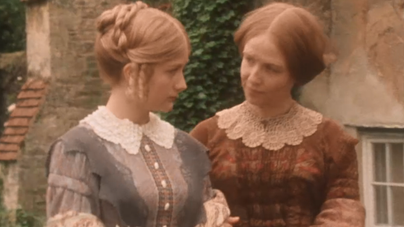
"BLEAK HOUSE" (1985) Review
In less than I year, I have developed this fascination with the works of Charles Dickens. How did this come about? I do not know. I have seen previous Dickens movie and television adaptations in the past. But ever since last year, I have been viewing these adaptations with a vengeance. And one of them turned out to be "BLEAK HOUSE", the 1985 adaptation of Dickens' 1852-53 novel.
Adapted by Arthur Hopcraft, this eight-episode miniseries conveyed the affects of Jarndyce v Jardyce, a long-running legal probate case involving the existence of more than one will. The heirs and their descendants have been waiting decades for the court to determine the legal will, for the sake of a large inheritance. Among those affected by the Jarndyce v Jardyce case are:
*John Jarndyce - a wealthy English landowner, who happens to be the proprietor of the estate, Bleak House. Jarndyce had inherited it from his uncle Tom Jarndyce, who had went mad waiting for a verdict on the case before committing suicide. *Richard Carstones - Tom Jarndyce's grandson and John Jarndyce's cousin, who also became one of the latter's legal wards, and a potential beneficiary of the Jarndyce v Jardyce case. *Ada Clare - Tom Jarndyce's granddaughter and Mr. Jarndyce's cousin, who also became one of his legal wards, and a potential beneficiary of the Jarndyce v Jardyce case. She and Richard, also cousins, became romantically involved. *Esther Summerson - one of the novel's main characters and orphan, who became Mr. Jarndyce's ward following the death of her previous guardian, Miss Barbury, who had also been her biological aunt. She joined the Bleak House household as Ada's companion and Mr. Jarndyce's housekeeper after he became the guardian of Richard and Ada. *Honoria, Lady Dedlock - the wife of baronet Sir Leicester Dedlock and a beneficiary of the Jarndyce v Jardyce case. She is also the younger sister of Miss Barbury and Esther's illegitimate mother. *Captain John Hawdon aka Nemo - a former British Army officer, who became an impoverished law writer and drug addict. He is also Lady Dedlock's former lover and Esther's illegitimate father. His penmanship on one of the Jarndyce v Jardyce affidavit attracts Lady Dedlock's attention. *Mr. Bill Tulkinghorn - Sir Leicester's ruthless lawyer, who noticed Lady Dedlock's reaction to the affidavit. This leads him to investigate her past and possible connection to Hawdon aka "Nemo". *Miss Flite - An elderly woman living in London, whose family had been destroyed by a long-running Chancery case similar to Jarndyce v Jarndyce. This has led her to develop an obsessive fascination with Chancery cases, especially the main one featured in this story. She quickly befriended Esther, Richard, Ada and Mr. Jarndyce.
As one can see, these characters represented plot arcs that connect to the Jarndyce v Jarndyce case. As one of the beneficiaries of the Jarndyce case, Richard becomes obsessed with the verdict. He seemed more interested in depending upon the Jarndyce verdict to provide him with an income rather than pursue a profession. This obsession eventually led to a clash between and Mr. Jarndyce, who has tried to warn him not to get involved with the case. Another clash formed between Lady Dedlock and Mr. Tulkinghorn, due to his determination to find proof of her past with Nemo and the conception of their child. A clash that proved to create even more damaging for a good number of people, than the one between Mr. Jarndyce and Richard. In the midst of all this stood Esther, who served as an emotional blanket for several characters - especially the inhabitants at Bleak House, a potential romantic figure for three men (ironic for a woman who was not supposed to be a great beauty), and the center of the Lady Dedlock-Nemo scandal.
For years, 1985's "BLEAK HOUSE" had been viewed as the superior adaptation of Dickens' novel. The first novel aired back in 1959. But a third television adaptation that aired in 2005 had managed to overshadow this second adaptation's reputation. But this is not about comparing the three adaptations. I am focusing only the 1985 miniseries. If I might be blunt, I believe screenwriter Arthur Hopcraft and director Ross Devenish created one of the better Charles Dickens I have personally seen. Granted, one might use the source material - the 1952-53 novel - as the reason behind the miniseries' top quality. But I have seen my share of poor adaptations of excellent source material . . . and excellent adaptations of poor or mediocre novels and plays. And I would find this excuse too simply to swallow. Hopcraft and Devenish could have easily created a poor or mediocre adaptation of the novel. Fortunately, I believe they had managed to avoid the latter.
With eight episodes, Hopcraft and Devenish did an excellent job in conveying Dickens' exploration into the chaos of the legal landscape in 19th century Britain, especially cases involving the Chancery courts. One might consider the longevity of Jarndyce v Jarndyce rather exaggerated. However, I speak from personal experience that an extended length of time in such a case is more than possible. But what I thought the effect of Jarndyce v Jarndyce and similar cases in Dickens' story seemed very interesting. In Richard Carstone's case, I suspect his own hubris and upbringing had allowed the case to have such a toxic effect upon him. He had been raised as a gentleman. Which meant he was not expected to work for a living. But since he did not possess a fortune or an estate - like Mr. Jarndyce - Richard never lost hope that the court would rule the Jarndyce v Jarndyce case in his favor, allowing him to inherit a great deal of money. Although it took another case to send Miss Flyte mentally around the bend, I found it interesting that her obsession with Chancery cases led her to attach her interest to the Jarndyce case beneficiaries.
The Jarndyce case also produce a group of leeches in the forms of attorneys like Mr. Tulkinghorn and his obsession with assuming control over the Dedlocks and Mr. Vholes, who had sucked a great deal of money from Richard in exchange for his legal services. The series also featured the vicious moneylender Mr. Smallweed, who helped Mr. Tulkinghorn in the latter's campaign against Lady Dedlock; and Mr. Jarndyce's "friend", Harold Skimpole, who had not only encouraged Richard to pursue a greater interest in the Jarndyce case, but also had accepted a "commission" from Vholes to recruit the young man as a client. Would I regard William Guppy as a leech? Sometimes. I had noticed that one particular story arc was missing - namely the story arc regarding the philanthropist Mrs. Jellyby, her daughter and Esther's friend, Caddy and the Turveydrop family. This did not bother me, for I have never been a fan of that particular arc.
However, I also noticed that "BLEAK HOUSE" featured a few moments in which important plot points had been revealed through dialogue or shown after the fact. Audiences never saw Skimpole convince Richard to hire Mr. Vholes. Instead, Mr. Jarndyce had revealed this incident after it happened. The whole scenario regarding Dr. Allan Woodcock being a survivor of a shipwreck was handled as a past event revealed by the good doctor himself. Hopcraft's script never stretched it out in the same manner as Dickens' novel or the 2005 miniseries. Audiences never saw George Rouncewell's release from jail, for which he had been incarcerated for murder. Instead, Episode Seven began with George in jail and later, near the end, found him serving as Sir Leicester's valet without any information on how that came about.
"BLEAK HOUSE" featured a few other writing and direction decisions by Hopcraft and Devenish that I found . . . well, questionable. Why did the pair solely focused on Lady Dedlock in the series' penultimate episode and Richard and the Jarndyce v Jarndyce case in the final one? Would it have been so difficult for them to switch back and forth between the two arcs in those final episodes? I found Inspector Bucket's resolution to the story's murder mystery rather rushed. I would have liked to see Bucket eliminate suspects before solving the case. In Bucket's final scene with the killer, Hopcraft left out that moment from the novel when the latter had the last scathing word on British society, leaving the police detective speechless. This erasure dimmed the impact of Dickens' message and made the killer even more of a caricature. I had some issues with how Devenish directed certain performances. How can I put this? I found them a bit theatrical.
I have one last issue - namely Kenneth MacMillan's cinematography. I realize that in "BLEAK HOUSE", fog represented institutional oppression and human confusion and misery in society. Unfortunately, I feel that MacMillan may have been heavy-handed in utilizing this symbol in the series. It is bad enough that photography featured a fuzzy element that seemed popular in many period productions in the 1970s. But thanks to MacMillan's use of fog in the story, there were many moment in which I could barely see a damn thing. And I found that irritating.
Aside from a few quibbles, I had no real issues with the performances featured in "BLEAK HOUSE". One of those quibbles proved to be the performances for some of the secondary cast members. How can I say this? The exaggerated and wooden performances for some of the cast members brought back memories of some of the minor actors' bad performances in 1982 miniseries, "THE BLUE AND THE GRAY". I must admit that I did not care for Pamela Merrick's portrayal of Lady Dedlock's French maid, Madame Hortense. Her performance bordered and then surpassed the lines of caricature - as some British actors/actresses tend to do. Charlie Drake's portrayal of the moneylender Smallweed tend to waver between a pretty solid performance and pure caricature. Although there were moments when I found her portrayal of the eccentric Miss Flyte a bit hammy, I must admit that Sylvia Coleridge gave a well-done performance. Chris Pitt's performance as Jo, the crossing sweeper boy struck me as very poignant. Yet, at the same time, he seemed so passive that at times, I found it difficult to believe he had survived on the streets on his own, for so long. Jonathan Moore, whom I had remembered from the 1988 television movie, "JACK THE RIPPER"; did an excellent job of conveying the ambitious and self-interested nature of law clerk William Guppy. However, his portrayal of Guppy seemed to lack the character's comedic nature. Denholm Elliot gave a very interesting performance as Esther, Richard and Ada's guardian, John Jarndyce. On one level, I found his portrayal of the kind-hearted Mr. Jarndyce as first-rate. Excellent. But there were moments, including the character's famous quote following Jo's death, when Elliott's Mr. Jarndyce seemed to resemble one of those "angry young men" characters from a John Osbourne play. I found those moments very odd.
However, there were performances that did not leave me scratching my head. Colin Jeavons and Anne Reid gave very competent performances as the grasping solicitor Mr. Vholes and George Rouncewell's close friend Mrs. Bagnet, respectively. Ironically, Jeavons had portrayed Richard Carstone in the 1959 adaptation of "Bleak House" and Reid had portrayed Mrs. Rouncewell in the 2005 television adaptation. Both Suzanne Burden and Lucy Hornak gave solid performances as Esther Summerson and Ada Clare. And yet, both actresses managed to rise to the occasion with some brilliant moments. Burden's moment came, following Esther's realization that she had survived the smallpox. As for Hornak, she gave an excellent performance during Ada's soliloquy about her love's growing obsession with the Jarndyce case. Brian Deacon gave a passionate performance as Dr. Allan Woodcourt, the penniless doctor in love with Esther. Ian Hogg gave a very solid, yet commanding performance as Inspector Bucket. I really enjoyed Sam Kelly's warm portrayal of the law-stationer, Mr. Snagsby. Bernard Hepton gave one of the most colorful performances of his career as the alcoholic rag and bone shopkeeper, Krook. Dave King gave a very solid performance as the loyal, yet intimidating and conservative former Army sergeant George Rouncewell. I found George Sewell's performance as Sergeant Rouncewell's older brother, the wealthy Mr. Rouncewell not only entertaining, but very memorable. I thought Robin Bailey did an excellent job portrayed the haughty and proud Sir Leicester Dedlock.
But there were four performances that really impressed me. One came from Philip Franks, who did an excellent job of conveying Richard Carstone's emotional journey from John Jarndyce's warm and friendly young man, to the more embittered one, obsessed with the Jarndyce case. T.P. McKenna gave a delicious performance as Mr. Jarndyce's self-involved friend, Harold Skimpole, who proved to be quite the emotional (and financial) vampire. I thought Peter Vaughan was superb as the Dedlocks' sinister lawyer, Mr. Tulkinghorn. I was amazed by how Vaughn managed to combine the character's dedication to protecting his client Sir Leicester and his penchant for assuming control over others. If I had voted for the best performance featured in "BLEAK HOUSE", I would choose Diana Rigg's portrayal of the tragic Honoria, Lady Dedlock. I believe the actress gave a brilliant performance as the mysterious, yet complicated baronet's wife, whose cool demeanor hid a great deal of emotions and a personal secret. I am shocked and amazed that neither she, Vaughn, McKenna or Franks had ever received any accolades for their performances.
In fact, I am surprised that "BLEAK HOUSE" had only received BAFTA nominations (and won three) . . . and they were in the technical/arts category, aside for the Best Drama Series/Serial. No Primetime Emmy nominations, whatsoever. Was this eight-part miniseries the best adaptation of Charles Dickens' 1852-53 novel? I cannot answer that question. Granted, it had its flaws. But what television or movie production did not? But I cannot deny that "BLEAK HOUSE" was a first-rate miniseries that deserved more accolades than it had received, thanks to Arthur Hopcraft's screenplay, Ross Devenish's direction and an excellent cast led by Suzanne Burden, Denholm Elliott and Diana Rigg.

#charles dickens#bleak house#bleak house 1985#arthur hopcraft#ross devenish#suzanne burden#denholm elliott#diana rigg#peter vaughan#philip franks#lucy hornak#colin jeavons#anne reid#dave king#george sewell#robin bailey#brian deacon#chris pitt#sam kelly#ian hogg#jarndyce v. jarndyce#jonathan moore#pamela merrick#sylvia coleridge#charlie drake#bernard hepton#t.p. mckenna#victorian age#period drama#period dramas
4 notes
·
View notes
Text

your hosts in a rare candid
(Sylvia Kristel and Ian McShane)
8 notes
·
View notes
Text


Ian Tyson, of Ian & Sylvia and Great Speckled Bird, Dead at 89
- “He put Canada on the map,” Randy Bachman says
Ian Tyson, one-half of Ian & Sylvia and writer of such songs as “Four Strong Winds” and “Someday Soon,” died Dec. 29 of “ongoing health complications,” according to a statement on his family’s behalf.
Tyson was 89 when he died at his ranch in Alberta, Canada.
“Rest in peace, Ian Tyson,” said Robbie Robertson, who performed “Four Strong Winds” with the Band and Neil Young during the Last Waltz concert.
Fellow Canadian Randy Bachman eulogized Tyson as “a fantastic singer, songwriter and inspiration” with whom the Guess Who and Bachman-Turner Overdrive co-founder shared many a stage.
Tyson “put Canada on the map with his folk hits and made the world wake up and take notice of the North,” Bachman said. “A true cowboy. Other worlds to sing in, my friend.”
As Ian & Sylvia with his former wife, Sylvia Fricker, the duo scored and wrote hits of their own - including Fricker’s “You Were on My Mind” - and that were covered by the likes of Bob Dylan, Phil Ochs, Joan Baez and the Kingston Trio among others.
“Farewell to the great folk singer-songwriter Ian Tyson … we won’t see his like again,” the Kingston Trio said.
Ian & Sylvia made one dozen albums as a duo before forming Great Speckled Bird. Tyson eventually retired from music, came back with a gravelly voice ravaged by illness and released his most-recent single, “You Should Have Known,” in 2017.
Suzy Bogguss remembered “the great Ian Tyson” as the musician who “helped launch my love and livelihood of singing.
“What a dream to call him ‘friend,’” she wrote on social media. “He was a great storyteller and melody-smith and his smooth, boyish voice made me swoon. Ride on cowboy, and thanks for leaving so much beautiful music for us to remember you by.”
12/30/22
#ian tyson#sylvia fricker#ian & sylvia#great speckled bird#robbie robertson#the band#neil young#randy bachman#the guess who#bachman turner overdrive#bob dylan#joan baez#phil ochs#the kingston trio#suzy bogguss
17 notes
·
View notes
Text

🌟
#ian tyson#sylvia tyson#ian and sylvia#great speckled bird#nd smart II#gram parsons and the fallen angels#country rock
5 notes
·
View notes
Text
I listened to Ian and Sylvia when I was very young. A true icon and legend.
6 notes
·
View notes